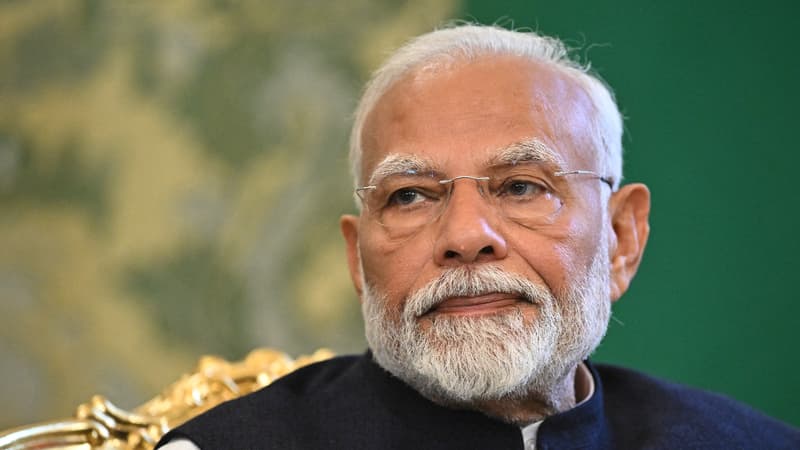To stimulate an economy threatened by the suffocation of American customs duties, the Indian Prime Minister, Narendra Moda, has tax reductions for consumer forcing, according to economists, billions of euros per year.
Customs duties about “made in India” products that reached the first commercial partner of the United States in the most populous country on the planet, were carried out on August 1 from 10% to 25%.
And the president of the United States, Donald Trump, threatened to double them at 50% before August 27, to punish New Delhi to buy Russia oil, saying that these purchases help Moscow finance their invasion of Ukraine.
“Lighten the tax burden of the common citizen”
New Delhi says he wants to conclude an agreement to avoid such a surcharge, which makes exporters of the fifth world economy fear a drop in orders and considerable loss of jobs. But the Indian media deepen that American negotiators have postponed a scheduled visit by the end of August in New Delhi.
Without waiting for a possible commitment, Narendra Modi, in a speech delivered on August 15 on the occasion of Independence Day, promised to “lighten the tax burden of the common citizen.”
For this, it provides a decrease in the tax on goods and services (GST) that probably make prices more attractive to Indian consumers.
Narendra Modi called this a “Diwali gift”, the Hindu Culture Festival in October, during which residents spend a lot, especially for the purchase of gold jewels, electronic products, clothes or objects for their home.
Relaunch consumption
The planned reform aims to simplify a complex system with four tax levels, from 5% to 28%, to reach two levels.
Economists have evaluated the discounts resulting from this reform to more than 10 billion euros annually.
The analysts of the consulting company Emkay Global Financial Services described this project “Welcome to stimulate national consumption”.
“About 90% of 28% taxed items will fall to 18%, and almost all 12% of the section in 5% of the section,” they explained.
According to Motilal Oswal analysts, a large number of economic sectors could benefit from it and this would “accelerate” the resumption of consumption because this would represent “substantial economies” for homes.
This reform must be approved by the GST Council that includes representatives of the governments of the various states. It is far from being acquired, in the past, it has always had difficulty finding a great consensus.
If approved, this measure will weigh on public finances, but could strengthen the popularity of the ultra -rationalist prime minister with the Indian middle class.
Electoral term
“The GST’s adjustment is a strong Modi response,” said Deepanshu Mohan, an OP Jindal Global University economist, with AFP.
For him, “this will certainly allow the government to win points” in the opinion.
These reductions could intervene before the elections scheduled for October or November in Bihar, a major state of 130 million inhabitants, and currently in the hands of the key support of the current government coalition.
While economists have been asking for years to review the GST system, Narendra Modi’s surprise announcement comes at a time when relations between the United States and India have been in the lowest decades in decades.
Economists estimate that if New Delhi and Washington do not conclude a commercial agreement, the American surcharge could increase GDP growth below 6% for the current fiscal year, below the central bank’s forecasts (6.5%).
Source: BFM TV


